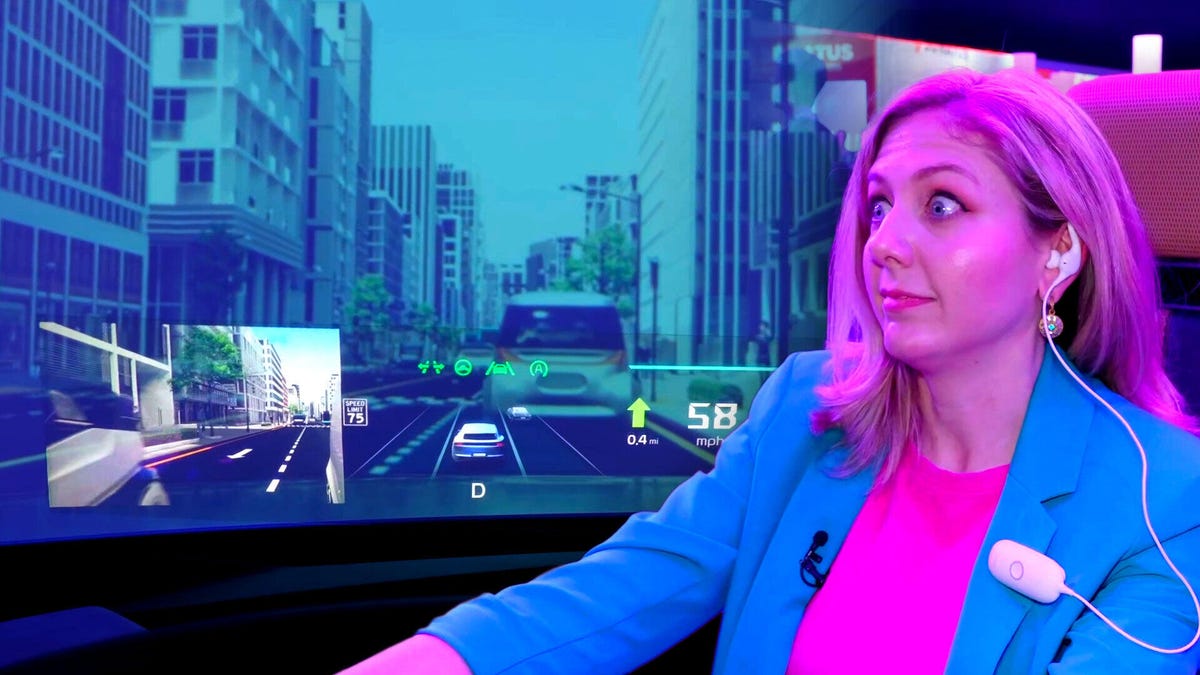Revolutionizing Visibility: Hyundai Mobis Unveils Groundbreaking Holographic Windshield Display
In an era where technology and automotive design are converging at an unprecedented pace, Hyundai Mobis is setting a new standard in automotive innovation with its groundbreaking holographic windshield display. This cutting-edge feature promises to enhance both driver experience and safety by projecting vital information in an immersive format. By integrating holographic technology into vehicles, Hyundai Mobis is not just changing how we view information; it’s revolutionizing visibility on the road.
The Need for Enhanced Driver Awareness
As vehicles become more advanced, the need for enhanced driver awareness has never been more critical. Traditional dashboards can be distracting and require drivers to divert their attention away from the road. Accidents caused by distracted driving have highlighted the urgency for solutions that keep vital information within the driver’s line of sight.
Hyundai Mobis’s holographic windshield display addresses this concern by projecting important data directly onto the windshield. This technology allows drivers to access navigation, speed, and other essential information without taking their eyes off the road, thereby reducing the risk of accidents and promoting safer driving practices.
How the Holographic Windshield Display Works
The holographic windshield display utilizes advanced projection technology to create a three-dimensional image that appears to float in front of the vehicle. This system works by layering information on the windshield using holographic optics, enabling the driver to perceive the information as though it were part of the real world.
Key features of the holographic display include:
- Navigation Assistance: Directions are projected in real-time, allowing drivers to follow routes effortlessly.
- Speed Monitoring: The current speed is displayed, helping drivers maintain safe speeds without glancing down at the dashboard.
- Warning Alerts: Safety warnings, such as collision alerts or lane departure notifications, are highlighted directly in the driver’s line of sight.
- Augmented Reality (AR) Integration: The display can overlay information about nearby points of interest or hazards, enriching the driving experience.
Benefits of Holographic Displays in Vehicles
The advantages of implementing a holographic windshield display extend beyond merely improving visibility. Some notable benefits include:
- Increased Safety: By providing critical information at a glance, drivers can make informed decisions swiftly, reducing reaction times in emergency situations.
- Enhanced Comfort: The immersive experience of a holographic display can make driving less stressful and more enjoyable, allowing for a more relaxed journey.
- Customization: Drivers can personalize the information displayed based on their preferences, leading to a more tailored driving experience.
Challenging Conventional Design Norms
The introduction of a holographic windshield display signifies a shift in automotive design philosophy. Traditional dashboards have been built around physical gauges and screens, but this new technology challenges those norms by integrating digital information seamlessly into the vehicle’s architecture.
Hyundai Mobis is pioneering a shift toward minimalistic interiors where the dashboard can be decluttered, allowing for a cleaner and more modern aesthetic. This change is not just about aesthetics; it’s about creating a space that enhances the driver’s connection with the vehicle and the road.
Future Implications for Automotive Technology
The holographic windshield display is just the beginning of what is possible in automotive technology. As the automotive industry continues to evolve, we can anticipate further advancements that may include:
- Vehicle-to-Everything Communication: Future vehicles may communicate with each other and infrastructure, allowing the holographic display to present real-time traffic conditions, road closures, or accidents ahead.
- Autonomous Driving Integration: As vehicles move toward autonomy, holographic displays could be instrumental in conveying essential information about the vehicle’s status and surroundings to the driver.
- Smart City Integration: Holographic displays could connect with smart city ecosystems to provide information on local events, weather updates, and more, enhancing the overall driving experience.
Challenges and Considerations
Despite its immense potential, the implementation of holographic displays does come with challenges. Some of these include:
- Cost of Technology: The development and manufacturing of holographic displays might lead to higher vehicle costs, which could affect consumer adoption.
- Driver Distraction: While the goal is to reduce distractions, there is a risk that overly complex information could lead to cognitive overload, necessitating careful design considerations.
- Regulatory Standards: As with any new technology, regulatory bodies will need to establish guidelines to ensure safety and efficacy, which could slow down widespread implementation.
The Road Ahead: Hyundai Mobis and Innovation
Hyundai Mobis is at the forefront of automotive innovation, and the unveiling of the holographic windshield display is a testament to its commitment to enhancing driver experiences. By integrating this technology into vehicles, Hyundai Mobis is paving the way for safer, more intuitive driving environments.
As the automotive landscape evolves, the integration of holographic technology will likely play a crucial role in shaping how drivers interact with their vehicles. With ongoing research and development, the future looks bright for drivers and technology enthusiasts alike.
Conclusion
In conclusion, Hyundai Mobis’s holographic windshield display is not merely a technological advancement; it represents a paradigm shift in how we perceive and interact with our vehicles. By prioritizing safety, comfort, and design, this groundbreaking innovation is set to revolutionize visibility in the automotive industry. As we look to the future, it’s clear that the integration of such advanced technologies will not only enhance the driving experience but also redefine what it means to be a driver in an increasingly connected world.
See more Future Tech Daily

